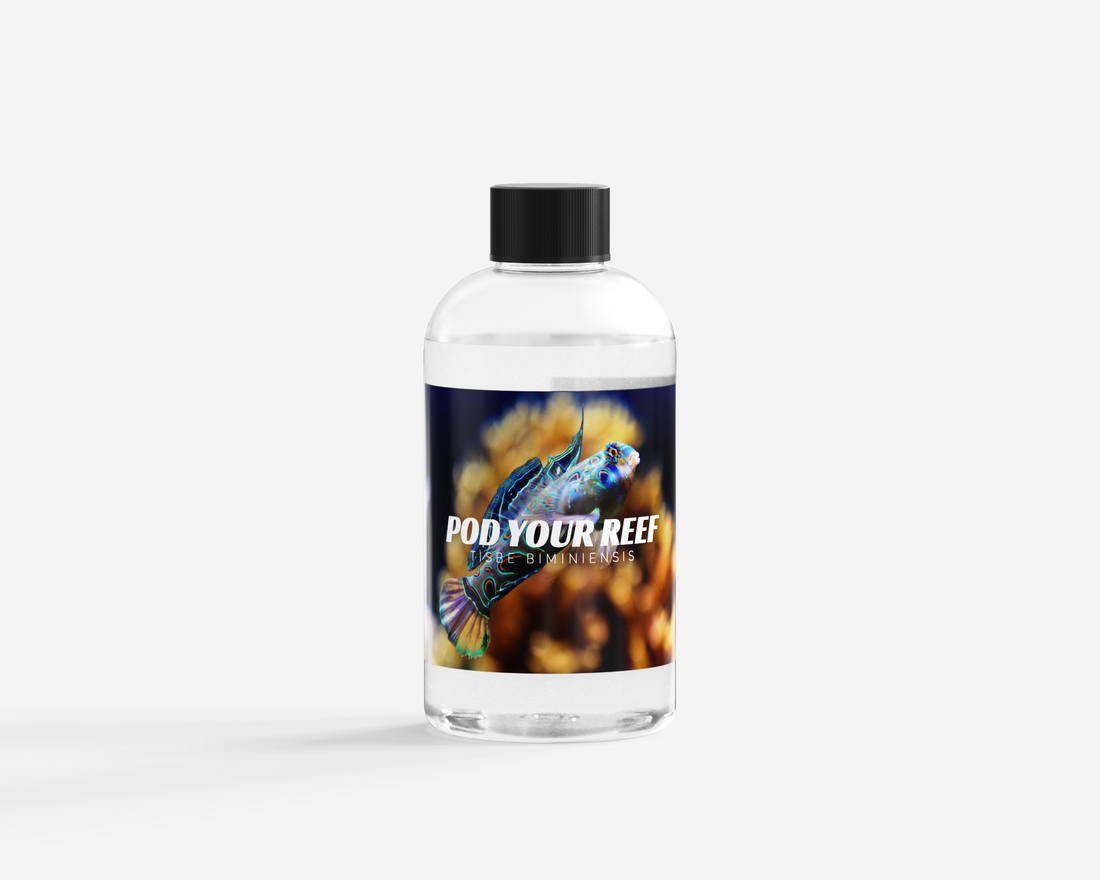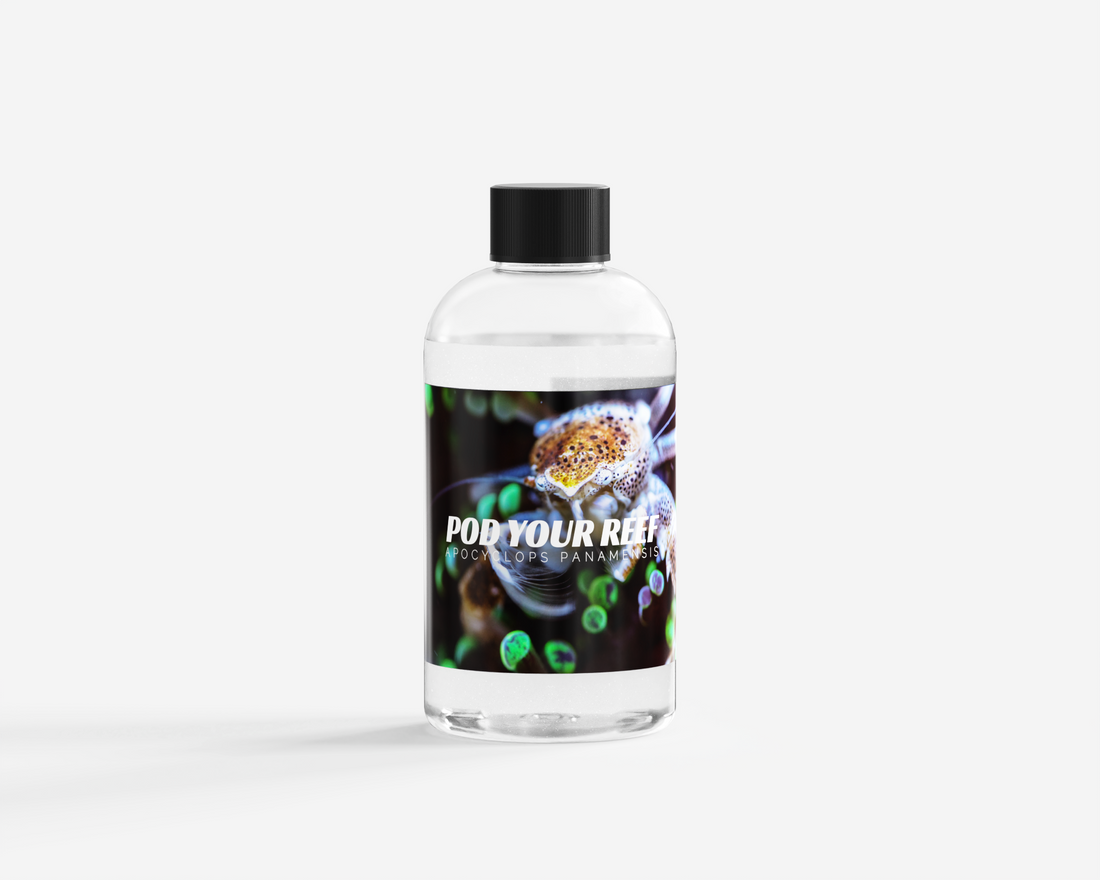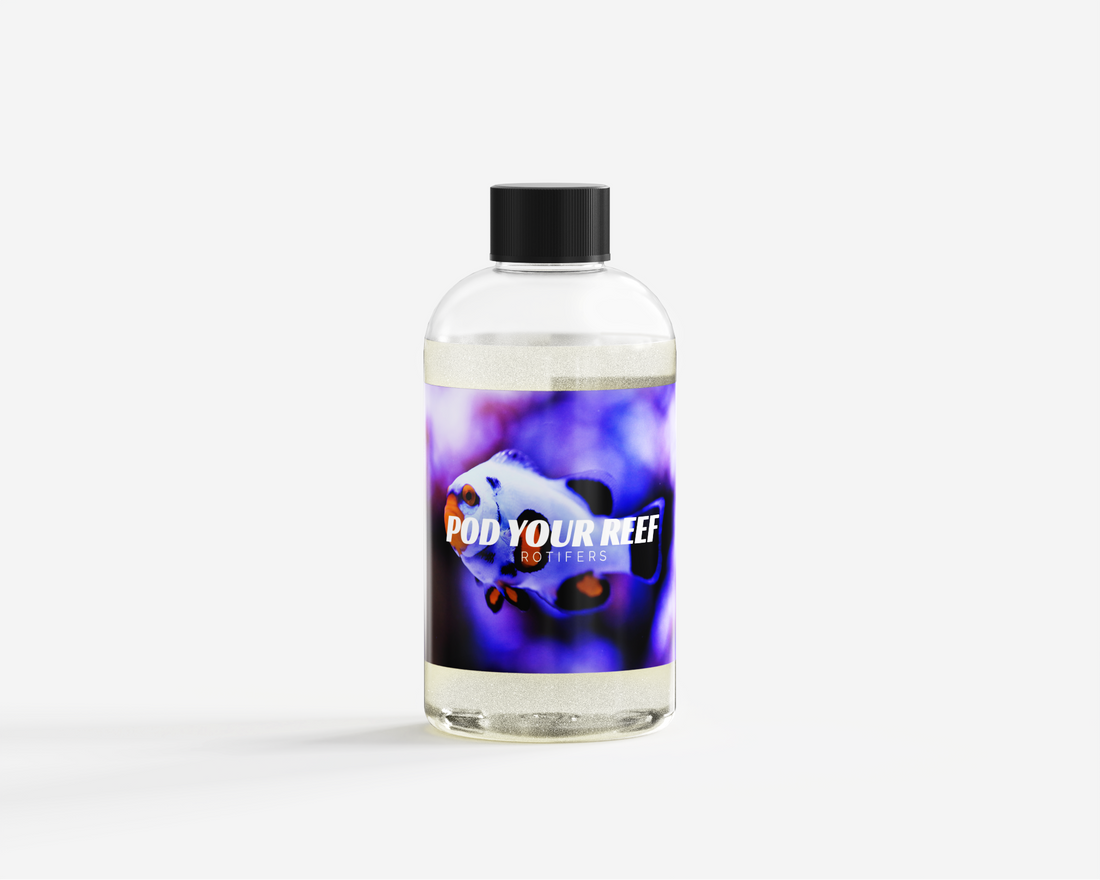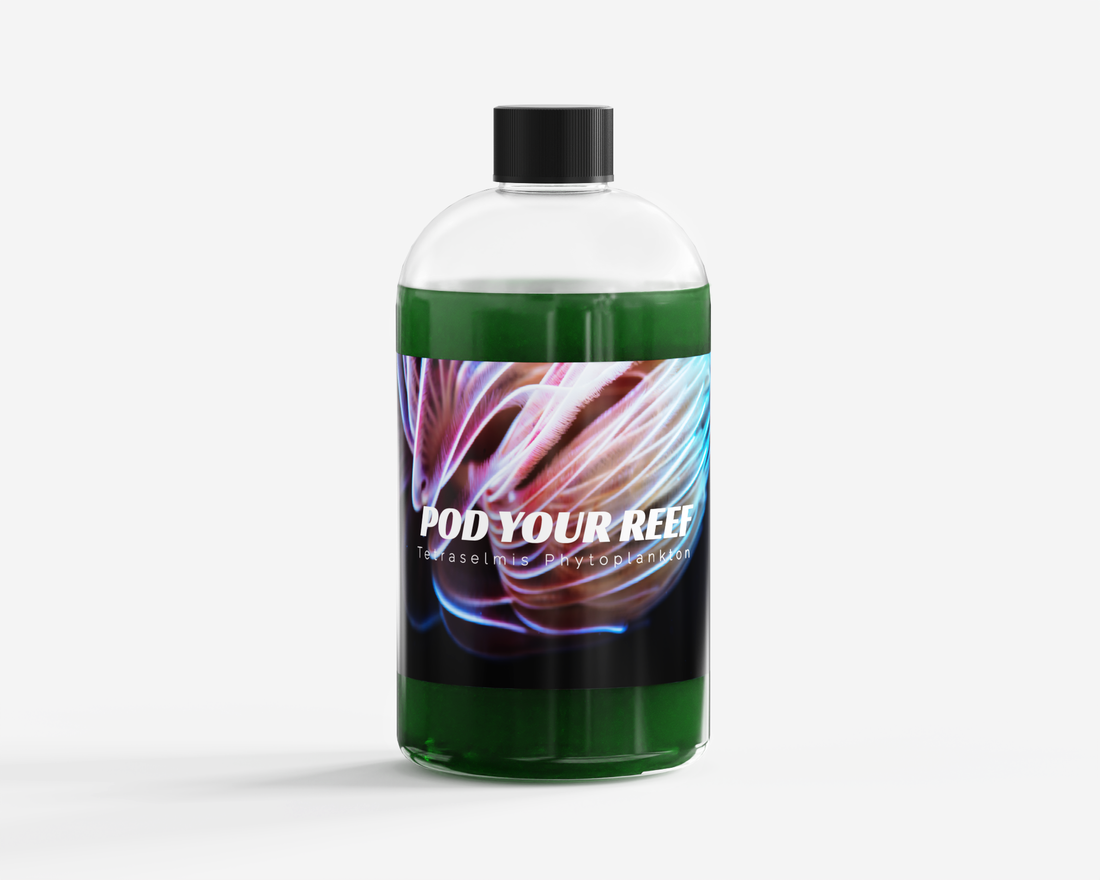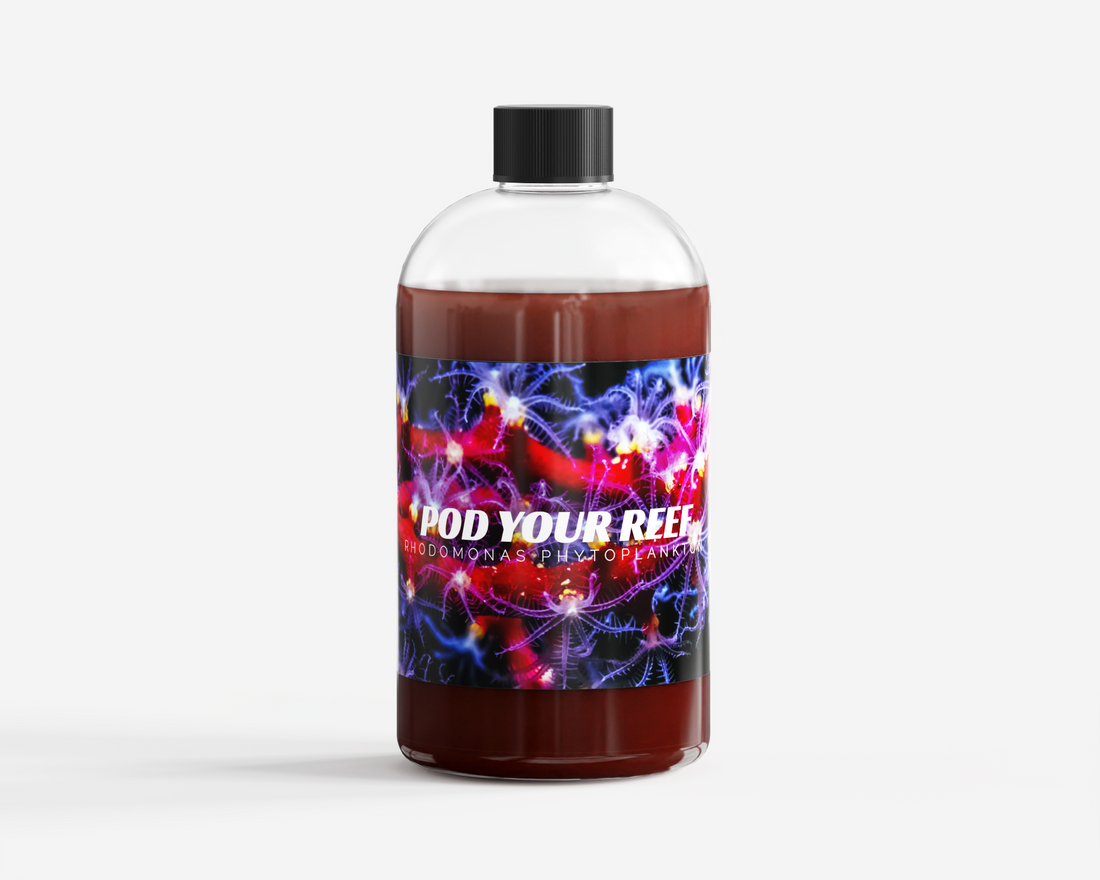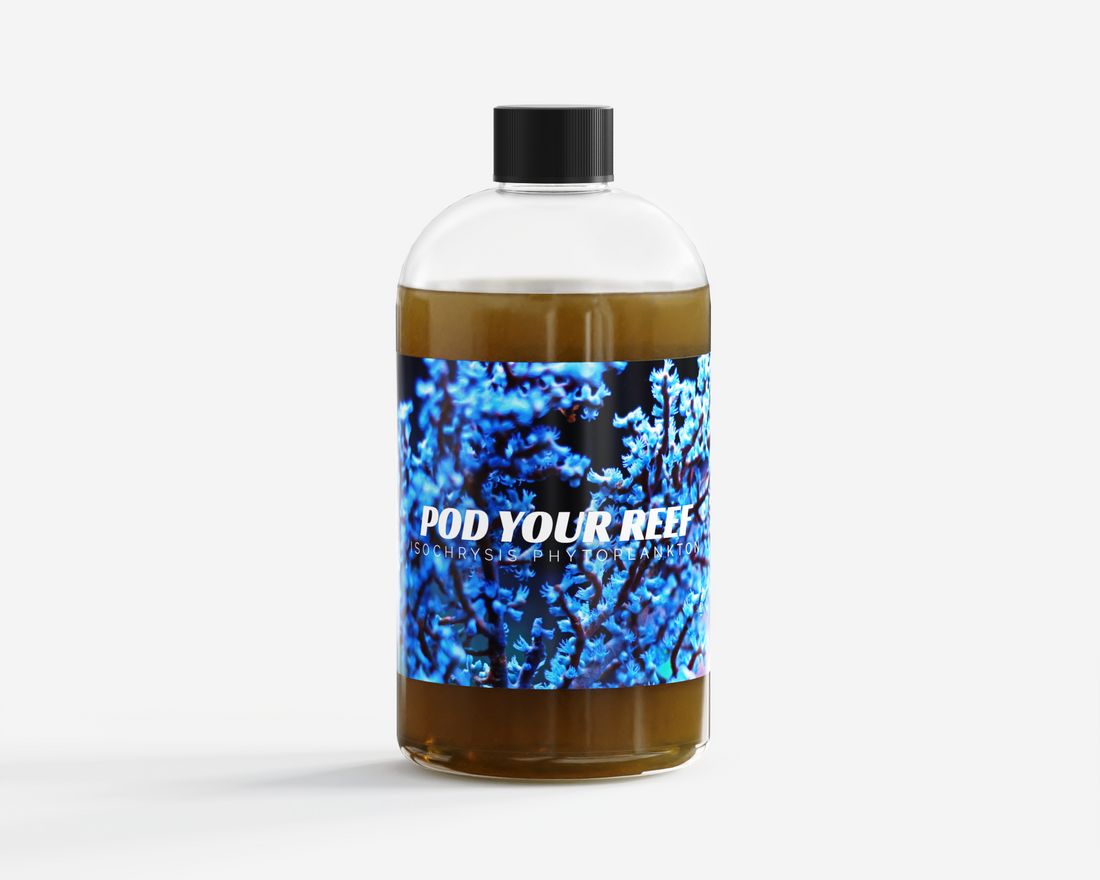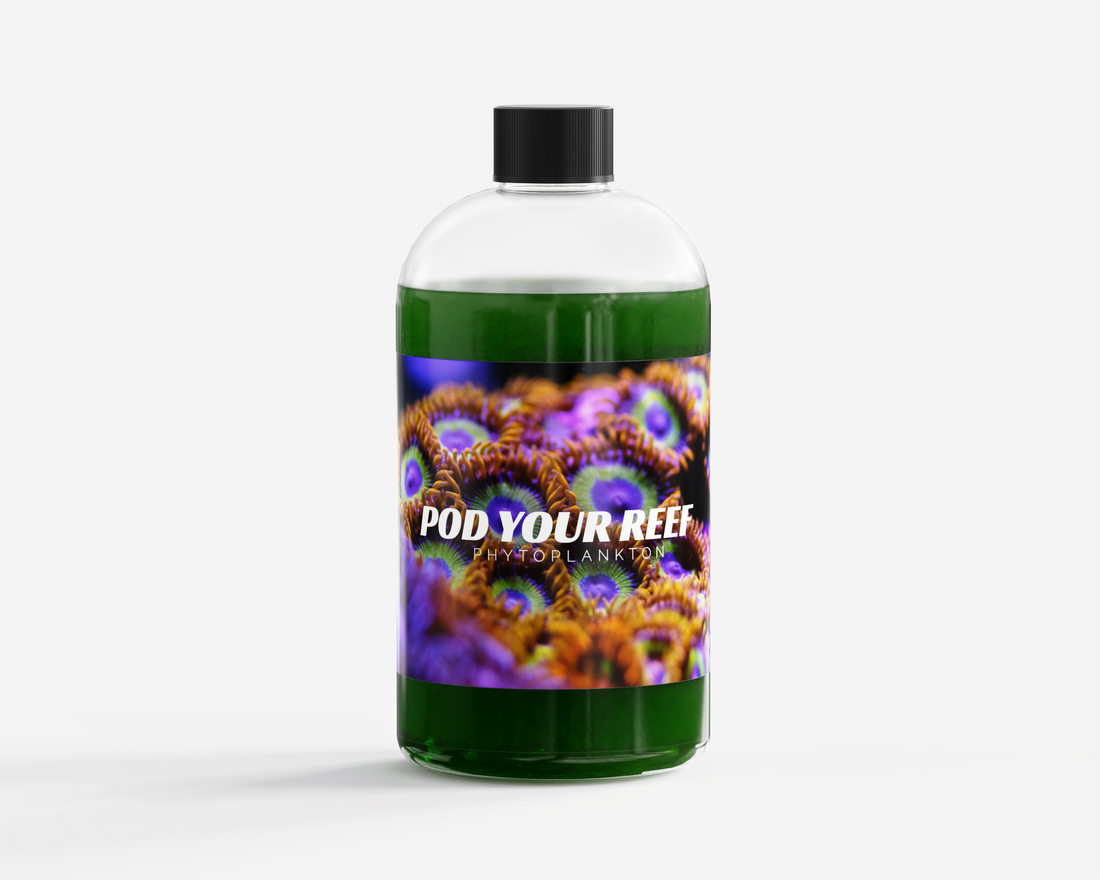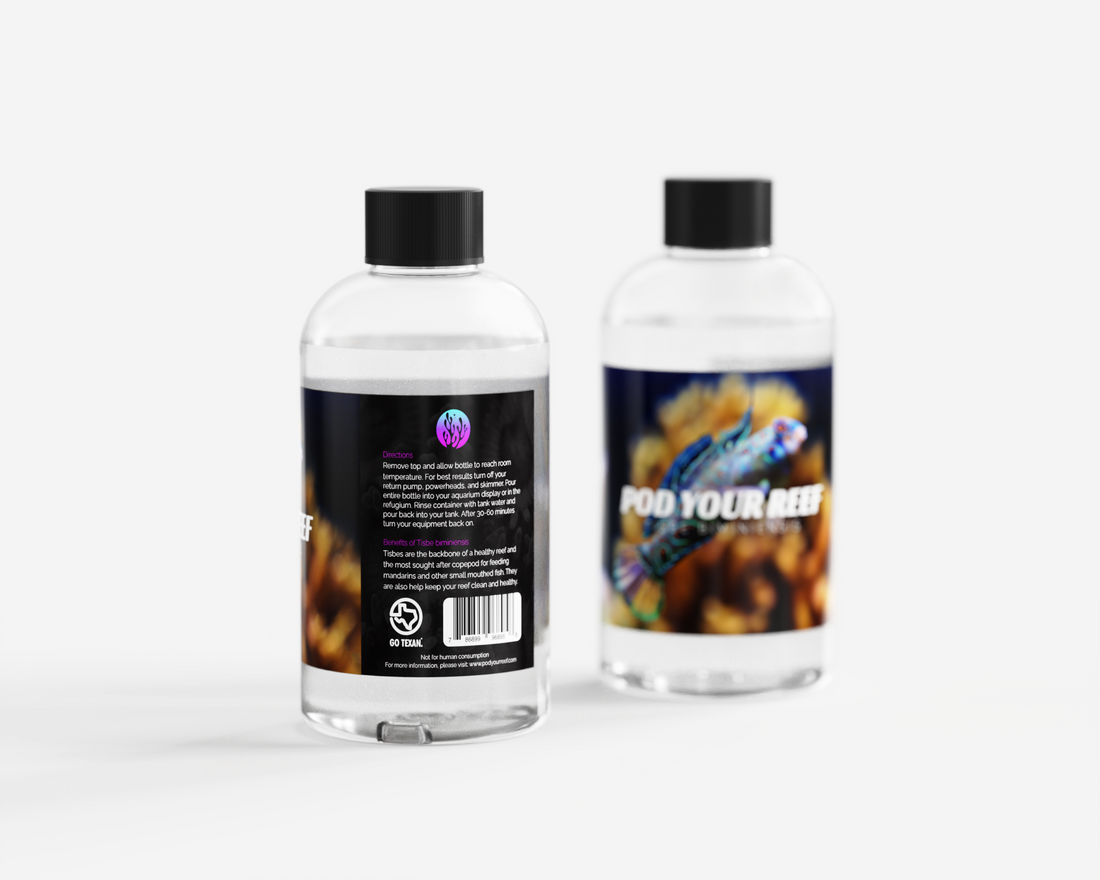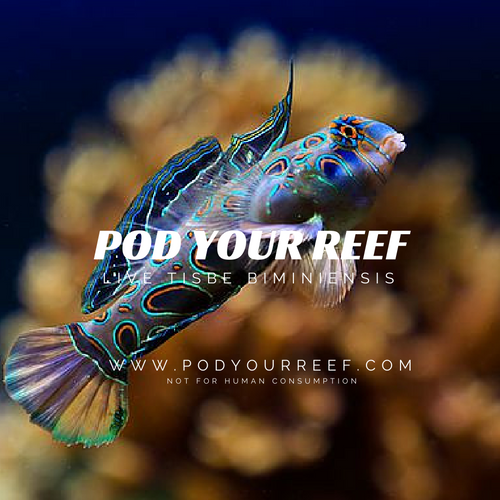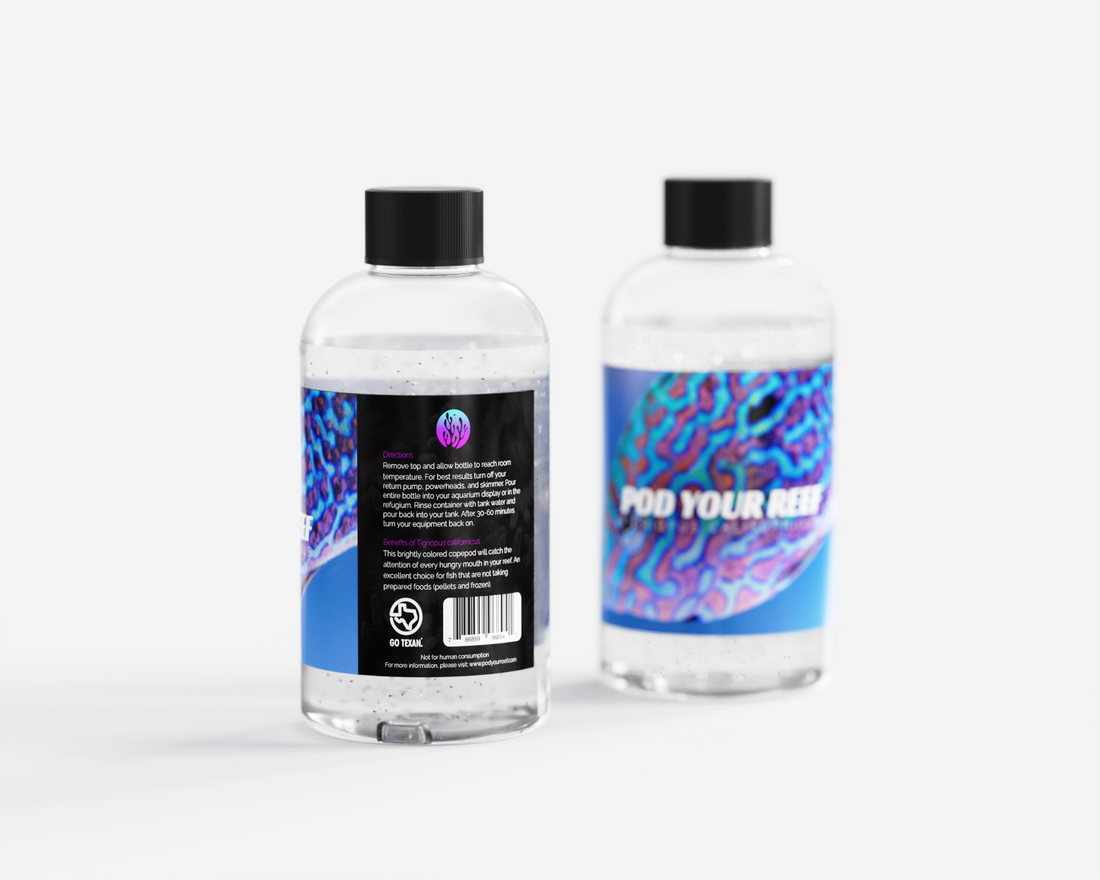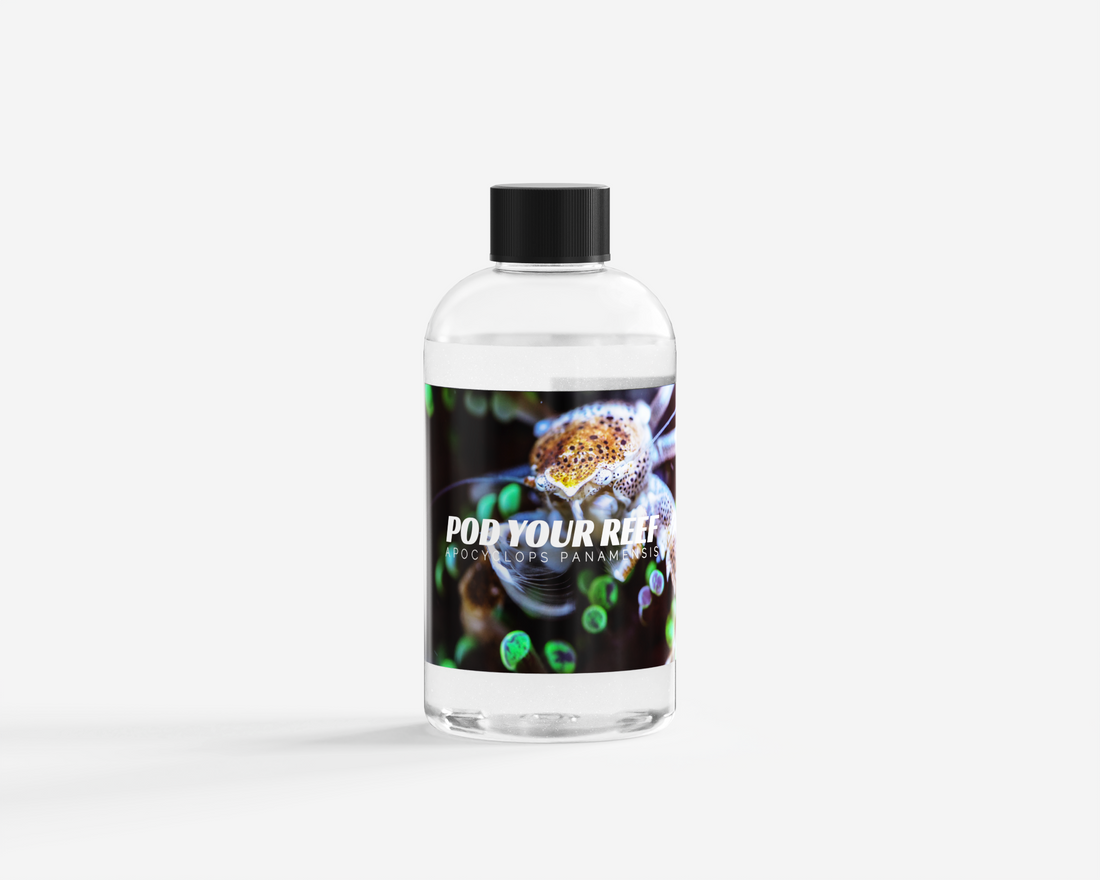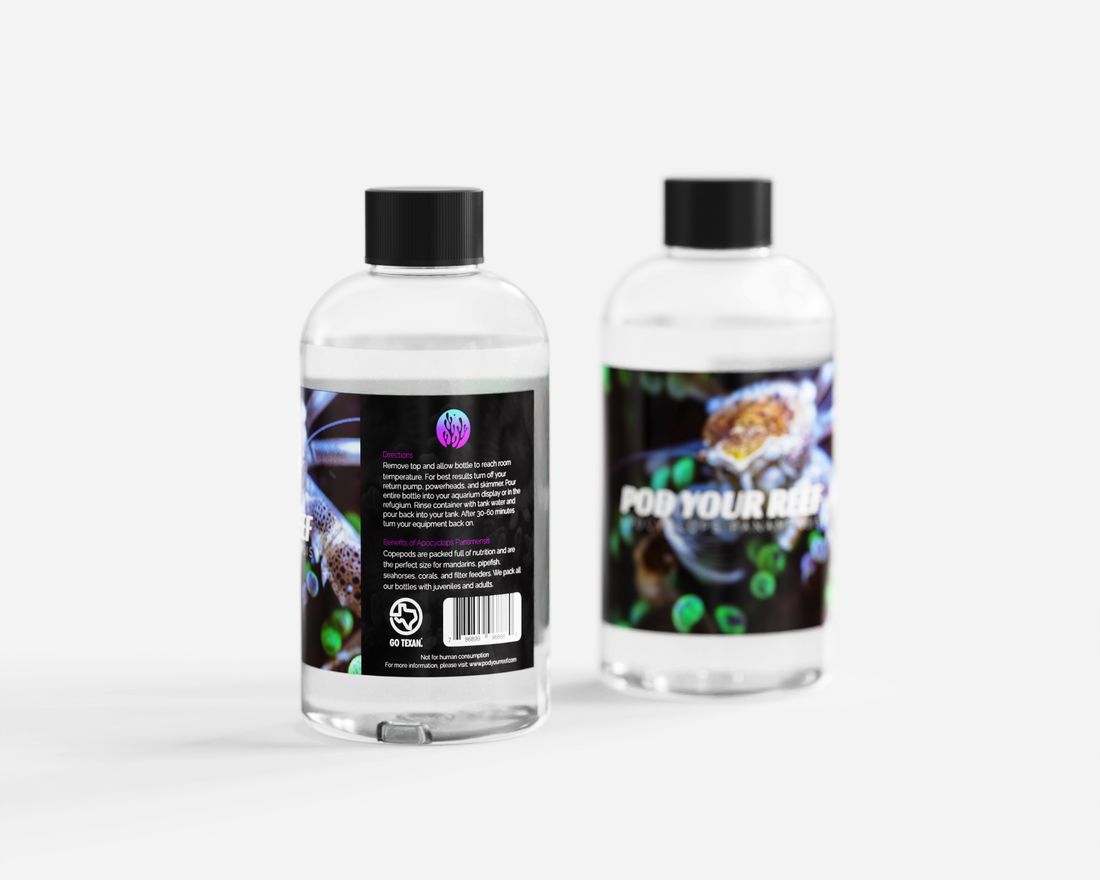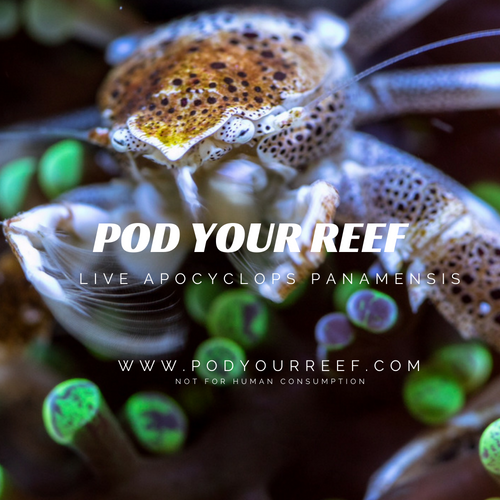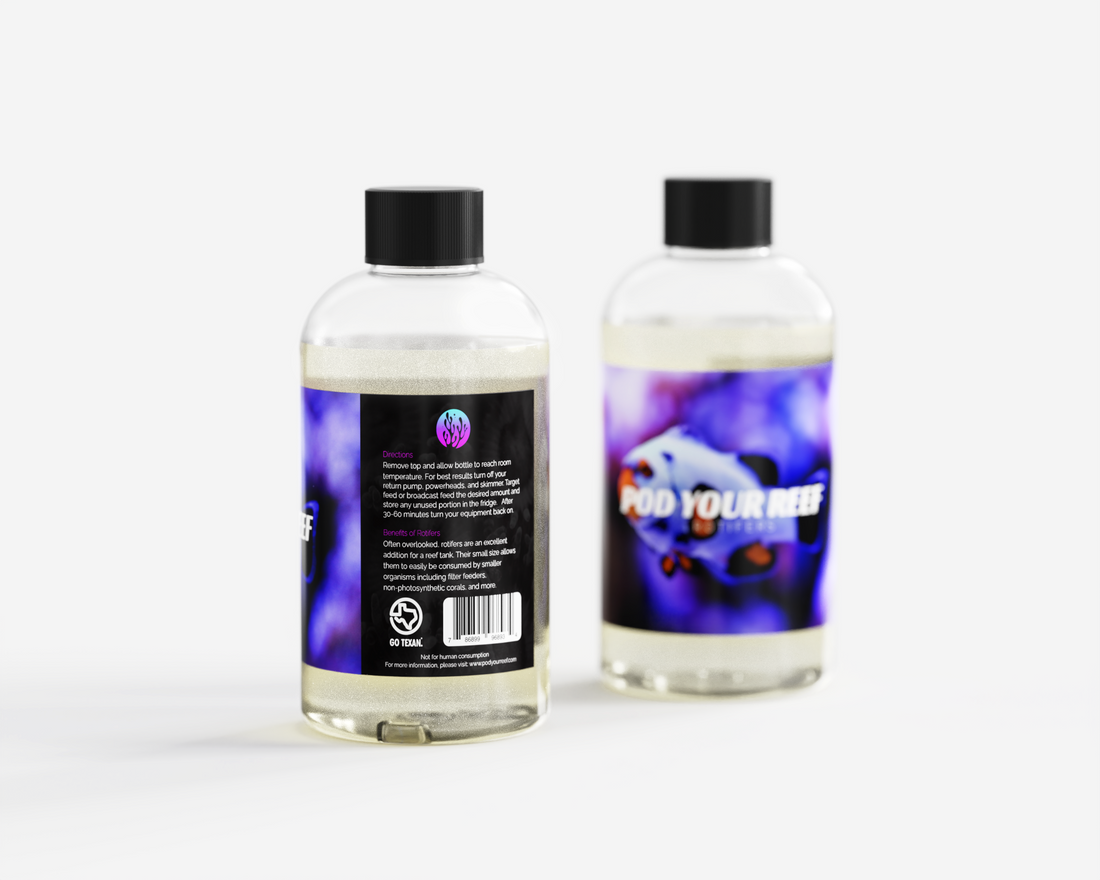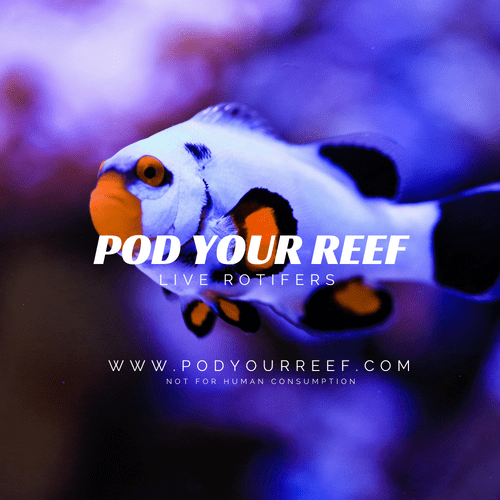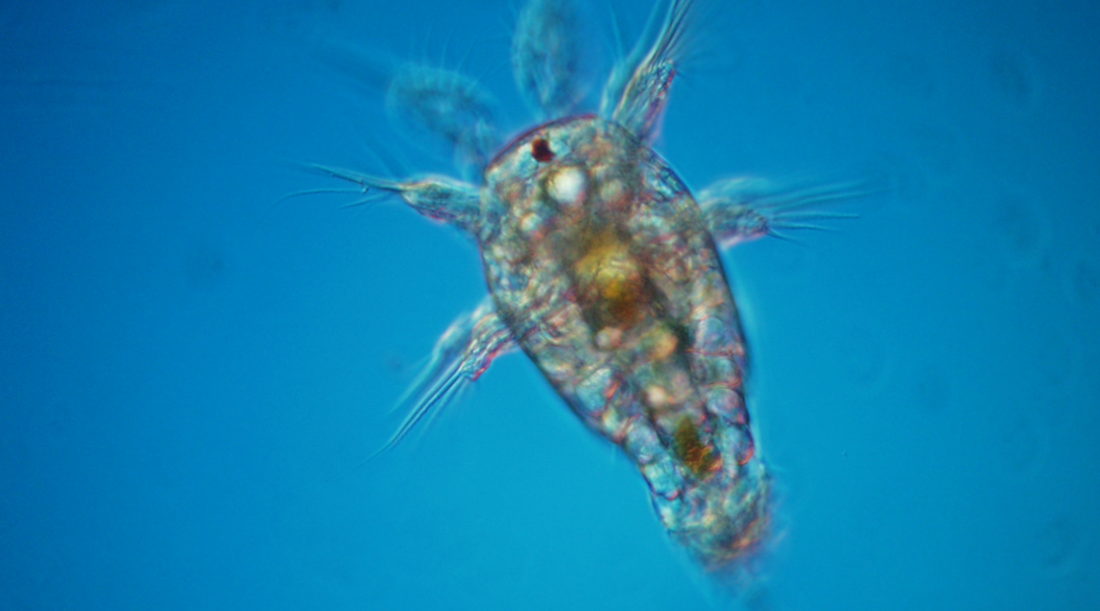
Care
Parvocalanus crassirostris: The Pod Father
Parvocalanus crassirostris: The Pod Father
The story of Parvocalanus crassirostris
Copepods are the great bridge between the microscopic and macroscopic universes. This is no more true than amongst the vast expanse of the world’s oceans. All life in the ocean is derived from the primary production of microalgae and other photosynthetic organisms. These algae boom and bust, producing pulses of nutrition which radiate into all other higher forms of life. As most large organisms cannot eat microalgae, copepods are the essential primary grazers which carry this nutrition through to fish and invertebrate larvae. Even charismatic titans, such as marlin and bluefin tuna, have no chance of surviving their first week of life without finding a robust patch of pods. This is the crucial ecological context: how have various marine larvae adapted to seek out specific copepod forage? Understanding the subtle intimacies of these microscopic predator-prey interactions are paramount for expanding the frontiers of sustainable aquaculture. Thousands of marine species are harvested annually, both for human consumption and for the reef aquarium industry. Regardless of the specific practices, it remains largely untenable to rely solely on wild stocks for these purposes. It has been historically impossible for many marine species to be aquacultured because of an inability to feed (and nutritionally satisfy) small-mouthed marine larvae. Parvocalanus crassirostris was the godsend live feed species which has allowed for the successful rearing of hundreds of marine larval species unable to utilize rotifers and Artemia as a first-feed. Due to its incredible characteristics, Parvocalanus crassirostris is not merely another live-feed species, but represents a new dawn in sustainable aquaculture.
Parvocalanus crassirostris is a calanoid copepod in the family Paracalanidae. It can be found throughout the tropical and subtropical Atlantic. In contrast to harpacticoid copepods, such as Tigriopus californicus and Tisbe biminiensis, calanoid copepods do not crawl on surfaces and into rockwork. Calanoid copepods are pelagic in nature, evolving to dominate the open seas free of permanent structure. To maneuver this dynamic environment, Parvocalanus crassirostris is capable of incredible locomotion. Rather than a ‘pep’ or a ‘scoot’, this copepod practically teleports a multitude of its own body length with each stride! This allows this species to undergo dramatic daily migrations up and down the water column in search of pasture. Parvovalanus crassirositrs have facinaitingly sensitive and complex sensory abilities which they use to find algae forage, navigate vertical migrations and respond to population dynamics. The natural prey of Parvocalanus crassirostris is planktonic microalgae and it is absolutely necessary for their survival. Unlike other copepod species in the reef aquarium hobby (Tigriopus californicus, Tisbe biminiensis, Apocyclops panamensis etc.), this species cannot utilize biofilms and detritus. It must be fed a diet of lipid-rich, live microalgae such as Tisochrysis galbana, Rhodomonas salina or Chaetoceros muelleri. Though this dietary need presents a unique challenge to those seeking to cultivate this species, it should be known that Parvocalanus crassirostris is the formula one car of copepods: it requires the finest fuel, for the finest performance.
The utilization of calanoid copepod species, such as Parvocalanus crassirostris, has been revolutionary for global mariculture. Just like the golden microalgae Tisochrysis galbana (T-ISO), it has already become a species of profound historical significance. Hundreds of marine fish species were cultivated in captivity for the first time because they were fed copepod nauplii hours after birth. It is the nauplii which is by far the most valuable attribute of Parvocalanus crassirostris. Firstly, they are very small. Parvocalanus crassirostris nauplii hatch at under 50 microns in size. This means they can fit into the mouth of even the smallest larvae. They are also profoundly nutritious. Female copepods donate substantial lipid reserves to their eggs and unlike rotifers, copepod nauplii are born with tremendous fatty acid profiles. Vitally, they are dense in the polyunsaturated Golden Fats arachidonic acid (ARA), ecosapentanoic acid (EPA) and docosahexaenoic acid (DHA) which are absolutely essential to the short-term survival of marine larvae. Along with Golden Fats, copepod nauplii come packaged with proteins, complex carbohydrates, proenzymes, probiotics, prebiotics and carotenoids. Unlike other pelagic copepod species, they have no spiky protrusions and are soft-bodied. Like rotifers, they move in an appealing rotating manner making them highly desirable and catchable when fed at appropriate densities. This makes them the perfect meal for a larval fish born with minimal feeding infrastructure and/or gastrointestinal flora.
It has been well documented that Parvocalanus crassirostris nauplii can be effectively used for the aquaculture of a wide variety of fish species relevant to the reef aquarium industry. The nauplii of this species has proven invaluable as a ‘first feed’ to grow small larvae up to the point they can consume larger live feeds. Anil et al 2018 utilized Parvocalanus crassirostris nauplii as a first feed to successfully rear the larvae of Marcia’s Anthias (Pseudioanthias marcia). Burgess et al 2020 demonstrated that these nauplii elevated the survival of Leopard Coral Grouper (Plectropomus leopardus) larvae. Groover et al 2021 used these nauplii to successfully aquaculture Melanurus Wrasse (Halichoeres melanurus) larvae. As did Chen et al 2021 to cultivate Orchid Dottyback (Pseudochromis fridmani) larvae and Degidio et al 2017 for Milletseed Butterflyfish (Chaetodon miliaris) larvae. Perhaps most significantly, Callan et al 2018 at the Hawaii Pacific University Oceanic Institute demonstrated that Parvocalanus crassirostris nauplii were a suitable first feed for Yellow Tang (Zebrasoma flavescens) larvae. This was a game-changing discovery at a time when wild collection of this fish species had ceased. A similar breakthrough occurred at the University of Florida Tropical Aquaculture Laboratory when DiMaggio et al 2018 utilized these copepod nauplii to successfully feed the larvae of the Pacific Blue Tang (Paracanthurus hepatus). Because of this copepod, the days of farmed tangs are now here!
Parvocalanus crassirostris nauplii can be effectively applied towards the aquaculture of a seemingly endless diversity of marine fish and invertebrate species. A few more ‘aquaculture-first’ life-cycles associated with these species include Guinean Fingerfish (Monodactylus sebae), Cloudy Damsel (Dascyllus carneus), Blue Reef Chromis (Chromis cyaneus), Maze Rabbitfish (Siganus vermiculatus) to name but a few. The potential this species has compared to conventional live feeds such as rotifers and artemia is incomparable. Perhaps this is best summarized by Chaoushu Zeng of James Cook University when documenting the successful aquaculture of Green Mandarin Dragonet (Synchiropus splendidus) larvae:
“The outcomes of this study clearly demonstrated the importance of copepods as the diet for rearing early larvae of the green mandarin fish S. splendidus. When fed solely on rotifers, high larval mortality (>96%) was resulted. On the other hand, copepod P. crassirostris co-fed with rotifers dramatically improved larval survival, and 1 copepod mL−1 was recommended for co-feeding with rotifers in order to achieve high survival (>50% by 12 DPH). Larval survival was shown generally stabilized after 8 DPH.” (Zeng et al 2018)
Despite its many wonders, the major drawback to Parvocalanus crassirostris remains its relative difficulty to culture. Unlike more ‘user-friendly’ harpacticoid and cyclopoid copepods (Tigriopus californicus, Tisbe biminiensis, Apocyclops panamensis), this species MUST consume LIVE algae in order to survive. This means that live microalgae cultures (Tisochrysis galbana, Rhodomonas salina) must be maintained as well. Parvocalanus crassirostris also requires more stable water quality than the above mentioned species. Elevated levels of nitrates and phosphates can have negative effects on pelagic copepods, and thus, there is a fine line between under and over feeding. Oftentimes, water quality is maintained through intensive means. Parvocalanus crassirostris also cannot be grown at nearly as high densities as harpacticoid or cyclopoid copepods and adults will not reproduce if ‘stressful densities’ are reached.
Though Parvocalanus crassirostris remains an inherently difficult copepod species to cultivate, there is rising hope on the horizon. Alajmi 2015 demonstrated evidence that Parvocalanus crassirostris cultures improved production performance over generations. For example, a culture aquacultured over five generations had a peak stocking density of 7000ind/L, while a wild culture could not exceed 5000ind/L. Cultures aquacultures for over two years demonstrated qualities such as higher female to male ratios, greater adult size, greater adult longevity, increased female egg production, increased nauplii hatch size and enhanced fatty acid profiles . This offers great hope that the Parvocalanus crassirostris of the future will be far more forgiving and deployable at a larger scale. After all, the chicken did not start as a completely convenient organism, but once it was perfected, all things became possible.
Both in worlds of wild ocean ecosystems and global aquaculture, the copepod Parvocalanus crassirostris is a blessing of infinite proportions. Every second of every day, fish larvae somewhere eat a copepod larvae and grow stronger for it. It is important that this species is continuously produced. First and foremost is its now established role in global food security, for without pelagic copepod larvae, many marine seafood species cannot be commercially farmed. This copepod is just as crucial to the future of the reef aquarium industry. Aquacultured aquarium fish require less transportation and do not impede on wild ecosystems. Pelagic copepod larvae allow the reef aquarium industry to sustainably produce species which can no longer be collected. It is important that Parvocalanus crassirostris cultures be continuously available for purchase so that it will end up in the hands of as many aquaculture farms, research centers and aquarium enthusiasts as possible and so that it can feed as many larval tangs, grouper, seahorses and anthias as possible! The pelagic calanoid copepod Parvocalanus crassirostris is an invaluable tool for ushering in a new dawn of marine aquaculture.
Literature Consulted
Alajmi, F., & Zeng, C. (2014). The effects of stocking density on key biological parameters influencing culture productivity of the calanoid copepod, Parvocalanus crassirostris. Aquaculture, 434, 201-207.
Alajmi, F., Zeng, C., & Jerry, D. R. (2014). Improvement in the reproductive productivity of the tropical calanoid copepod Parvocalanus crassirostris through selective breeding. Aquaculture, 420, 18-23.
Alajmi, F., Zeng, C., & Jerry, D. R. (2015). Domestication as a novel approach for improving the cultivation of calanoid copepods: A case study with Parvocalanus crassirostris. PloS one, 10(7), e0133269.
Alajmi, F. F. (2015). Developing intensive culture techniques for the tropical copepod Parvocalanus crassirostris as a live feed for aquaculture (Doctoral dissertation, James Cook University).
Alajmi, F., & Zeng, C. (2015). Evaluation of microalgal diets for the intensive cultivation of the tropical calanoid copepod, P arvocalanus crassirostris. Aquaculture Research, 46(5), 1025-1038.
Anikuttan, K. K., Jayakumar, R., Nazar, A. A., Tamilmani, G., Sakthivel, M., Ramesh Kumar, P., ... & Ebeneezar, S. (2019). Successful mass production of Three spot damselfish through captive breeding. Marine Fisheries Information Service; Technical and Extension Series, (242), 7-9.
Anil, M. K., Gomathi, P., Raheem, P. K., Raju, B., Philipose, K. K., & Gopalakrishnan, A. (2018). Captive broodstock development, breeding and seed production of Anthid fish (family: Serranidae) Marcia's anthias, Pseudanthias marcia in recirculation aquaculture system (RAS). Aquaculture, 492, 265-272.
Anuraj, A., PP, S. B., Loka, J., Ignatius, B., Santhosh, B., Ramudu, K. R., ... & Shirdhankar, M. M. (2021). Induced breeding and larval rearing of vermiculated spinefoot, Siganus vermiculatus (Valenciennes, 1835) in indoor conditions. Aquaculture, 539, 736600.
Anzeer, F. M., Aneesh, K. S., Abraham, M. V., Darsana, S., Santhosh, B., Anil, M. K., ... & Yoyak, G. (2019). Breeding, early development and larval rearing of cloudy damsel, Dascyllus carneus Fischer, 1885. Aquaculture, 505, 374-385.
Ashok, A., Høj, L., Brinkman, D. L., Negri, A. P., & Agusti, S. (2022). Food-chain length determines the level of phenanthrene bioaccumulation in corals. Environmental Pollution, 297, 118789.
Burgess, A. I., Callan, C. K., Touse, R., & Delos Santos, M. (2020). Increasing survival and growth in larval leopard coral grouper (Plectropomus leopardus) using intensively cultured Parvocalanus crassirostris nauplii. Journal of the World Aquaculture Society, 51(1), 171-182.
Callan, C. K., Santos, M. D., Pereira, E., Touse, R., Harrison, P., Groover, E., ... & Corley, A. A. Leopard Coral Grouper, Plectropomus leopardus, Hatchery Manual.
Callan, C. K., Burgess, A. I., Rothe, C. R., & Touse, R. (2018). Development of improved feeding methods in the culture of yellow tang, Zebrasoma flavescens. Journal of the World Aquaculture Society, 49(3), 493-503.
Chen, J. Y., & Zeng, C. (2021). The effects of live prey and greenwater on the early larval rearing of orchid dottyback Pseudochromis fridmani. Aquaculture, 543, 737008.
Degidio, J. M. L., Yanong, R. P., Watson, C. A., Ohs, C. L., Cassiano, E. J., & Barden, K. (2017). Spawning, embryology, and larval development of the milletseed butterflyfish Chaetodon miliaris in the laboratory. North American Journal of Aquaculture, 79(3), 205-215.
Degidio, J. M. L., Yanong, R. P., Ohs, C. L., Watson, C. A., Cassiano, E. J., & Barden, K. (2018). First feeding parameters of the milletseed butterflyfish Chaetodon miliaris. Aquaculture Research, 49(2), 1087-1094.
DiMaggio, M. A., Cassiano, E. J., Barden, K. P., Ramee, S. W., Ohs, C. L., & Watson, C. A. (2017). First record of captive larval culture and metamorphosis of the Pacific blue tang, Paracanthurus hepatus. Journal of the World Aquaculture Society, 48(3), 393-401.
Elefante, D. J., Ohs, C. L., & Grabe, S. W. (2022). Egg Hatching, Stocking, Larval Feeding, and Handling Mortality of Guinean Fingerfish Monodactylus sebae. North American Journal of Aquaculture, 84(3), 295-303.
Gamiao, S. (2022). Survival in Parvocalanus crassirostris Cultures Treated with Commercial Probiotics (Doctoral dissertation, University of Hawai'i at Hilo).
Groover, E. M., Alo, M. M., Ramee, S. W., Lipscomb, T. N., Degidio, J. M. L., & DiMaggio, M. A. (2021). Development of early larviculture protocols for the melanurus wrasse Halichoeres melanurus. Aquaculture, 530, 735682.
Heindler, F. M., Alajmi, F., Huerlimann, R., Zeng, C., Newman, S. J., Vamvounis, G., & van Herwerden, L. (2017). Toxic effects of polyethylene terephthalate microparticles and Di (2-ethylhexyl) phthalate on the calanoid copepod, Parvocalanus crassirostris. Ecotoxicology and environmental safety, 141, 298-305.
Hill, M., Pernetta, A., & Crooks, N. (2020). Size matters: a review of live feeds used in the culture of marine ornamental fish. Asian Fisheries Science, 33(2), 161-174.
Hirai, N., Koiso, M., Teruya, K., Kobayashi, M., Takebe, T., Sato, T., ... & Hagiwara, A. (2013). Success of seed production of humphead wrasse Cheilinus undulatus with improvement of spawning induction, feeding, and rearing conditions. In US-Japan Aquaculture Panel Symposium (p. 107).
Holt, G. J., Leu, M. Y., Callan, C. K., & Erisman, B. (2017). Large angelfish and other pelagic spawners. Marine ornamental species aquaculture, 251-278.
Jackson, J. M. (2011). Larval clownfish Amphiprion ocellaris predatory success and selectivity when preying on the calanoid copepod Parvocalanus crassirostris (Doctoral dissertation, [Honolulu]:[University of Hawaii at Manoa],[August 2011]).
Jackson, J. M., & Lenz, P. H. (2016). Predator-prey interactions in the plankton: larval fish feeding on evasive copepods. Scientific reports, 6(1), 1-11.
Jungbluth, M. J., Selph, K. E., Lenz, P. H., & Goetze, E. (2017). Species-specific grazing and significant trophic impacts by two species of copepod nauplii, Parvocalanus crassirostris and Bestiolina similis. Marine Ecology Progress Series, 572, 57-76.
Kline, M. D., & Laidley, C. W. (2015). Development of intensive copepod culture technology for Parvocalanus crassirostris: Optimizing adult density. Aquaculture, 435, 128-136.
Laidley, C. W., Callan, C. K., Burnell, A., Liu, K. M., Bradley, C. J., Bou Mira, M., & Shields, R. J. (2008). Development of aquaculture technology for the flame angelfish (Centropyge loriculus). Regional Notes: Center for Tropical and Subtropical Aquaculture, 19(2), 4-7.
Lee, I. S., Ohs, C. L., Broach, J. S., DiMaggio, M. A., & Watson, C. A. (2018). Determining live prey preferences of larval ornamental marine fish utilizing fluorescent microspheres. Aquaculture, 490, 125-135.
Madhu, K., Madhu, R., & Xavier, B. (2017). Pomacanthus semicirculatus (Cuvier, 1831).
McKinnon, A. D., Duggan, S., Nichols, P. D., Rimmer, M. A., Semmens, G., & Robino, B. (2003). The potential of tropical paracalanid copepods as live feeds in aquaculture. Aquaculture, 223(1-4), 89-106
McKinnon, D. A., & Duggan, S. S. (2014). Community ecology of pelagic copepods in tropical coastal waters. In Copepods: Diversity, Habitat and Behavior. Editor: Laurent Seuront.
Olivotto, I., Holt, S. A., Carnevali, O., & Holt, G. J. (2006). Spawning, early development, and first feeding in the lemonpeel angelfish Centropyge flavissimus. Aquaculture, 253(1-4), 270-278.
Pan, Y. J., Dahms, H. U., Hwang, J. S., & Souissi, S. (2022). Recent Trends in Live Feeds for Marine Larviculture: A Mini Review. Frontiers in Marine Science, 9.
Pratama, I., & Albasri, H. (2019). Study on survivability of newly hatched larvae of two species of peppermint shrimp fed with different combinations and densities of live foods. Indonesian Aquaculture Journal, 14(1), 15-22.
Rohini Krishna, M. P. V., Anil, M. K., Gomathi, P., Raheem, P. K., & Pushparajan, N. R. (2019). Studies on the broodstock production and larval rearing of Coral demoiselle Neopomacentrus nemurus (Bleeker 1857). Aquaculture Research, 50(2), 412-422.
Santhosh, B., Ranjan, R., Gopakumar, G., Anil, M. K., Megarajan, S., Gomathi, P., ... & Rinju, M. (2018). Use of copepods in marine fin fish larval rearing. Copepods, 113.
Santhosh, B., Anil, M. K., Muhammed Anzeer, F., Aneesh, K. S., Abraham, M. V., Gopakumar, G., ... & Unnikrishnan, C. (2018). Culture techniques of marine copepods.
Schipp, G. (2006). The use of calanoid copepods in semi-intensive, tropical marine fish larviculture. Avances en Nutrición Acuicola..
Shao, L. (2016). Development of larval fish rearing techniques and nutrient requirements for the green mandarin, Synchiropus splendidus: a popular marine ornamental fish (Doctoral dissertation, James Cook University).
Shao, L., & Zeng, C. (2020). Survival, growth, ingestion rate and foraging behavior of larval green mandarin fish (Synchiropus splendidus) fed copepods only versus co-fed copepods with rotifers. Aquaculture, 520, 734958.
Valencia, G. A. T., Merino, G. E., Prieto-Guevara, M. J., Portillo, J. E. A., Arboleda, J. E. L., & Chapman, F. A. (2022). Spawning Parvocalanus crassirostris at a high adult density: Explaining low adult population numbers and means for improving their intensive culture. Aquaculture, 546, 737347.
Vidjak, O., Bojanić, N., Gladan, Ž. N., Skejić, S., SKEJIĆ, B., & GRBEC, B. (2016). First record of small tropical calanoid copepod Parvocalanus crassirostris (Copepoda, Calanoida, Paracalanidae) in the Adriatic Sea. Mediterranean Marine Science, 17(3), 627-633.
Zeng, C., Shao, L., Ricketts, A., & Moorhead, J. (2018). The importance of copepods as live feed for larval rearing of the green mandarin fish Synchiropus splendidus. Aquaculture, 491, 65-71.

